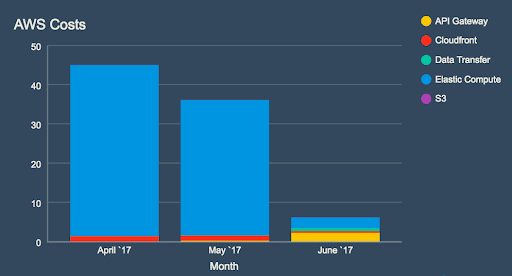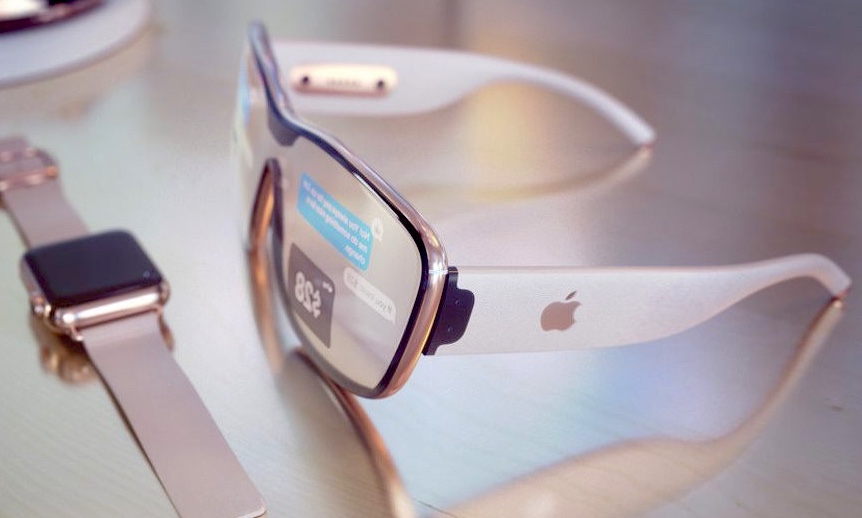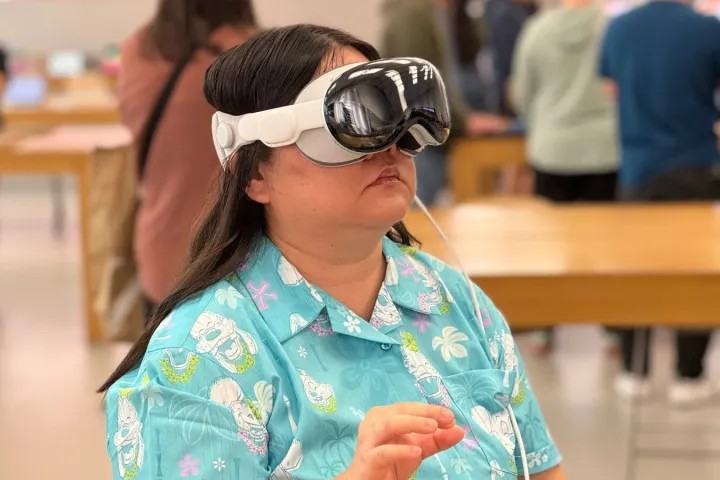The Future of AR is Here, But Not How We Expected
When Apple unveiled the Vision Pro, it wasn’t just launching a new product; it was presenting a bold, uncompromising vision for the future of computing. Dubbed a “spatial computer,” the device promised to seamlessly blend the digital and physical worlds with breathtaking fidelity. However, its premium price tag and niche positioning have kept it in the hands of early adopters and developers. Now, the latest Apple Vision Pro news suggests a significant strategic pivot is underway. Reports indicate that Apple is reallocating resources from a direct, high-end successor to the Vision Pro to prioritize the development of a more affordable, lightweight, and accessible smart glasses product. This move isn’t an admission of failure but a classic Apple maneuver: introduce a revolutionary concept, learn from the market, and then engineer a version for the masses. This potential shift has profound implications for the entire Apple ecosystem news cycle, signaling a strategic acceleration toward making augmented reality a part of our daily lives, not just a destination experience.
Section 1: The Strategic Realignment of Apple’s AR Ambitions
The decision to potentially pause development on a “Vision Pro 2” in favor of a more mainstream device is a calculated move rooted in market realities and Apple’s own history. Understanding this pivot requires looking at the competitive landscape, the lessons from the current Vision Pro, and Apple’s time-tested product playbook.
From a “Spatial Computer” to an “iPhone Companion”
The Apple Vision Pro is a technological marvel, packing M2 and R1 chips, ultra-high-resolution micro-OLED displays, and a sophisticated array of cameras and sensors into a single headset. This power comes at a cost, both in price and physical weight, making it an intensive-use device rather than an all-day accessory. The rumored new direction focuses on a product that is fundamentally different in its purpose. Instead of replacing your Mac, this device would augment your iPhone. Think of it less as a computer on your face and more as the ultimate evolution of the Apple Watch or AirPods—a seamless, glanceable interface for notifications, navigation, and quick interactions. This aligns with the broader trend in Apple AR news, which points toward ambient computing, where technology fades into the background. The goal is no longer just to create immersive worlds but to subtly enhance the one we already live in.
Learning from Apple’s Product History
This two-tiered strategy is a hallmark of Apple’s success. The original iPod was a premium device, but it was the more affordable iPod Mini news and the even more accessible iPod Nano news and iPod Shuffle news that truly revolutionized the music industry and led to mass adoption. We’ve seen this pattern repeat across product lines. The initial iPhone created the category, but models like the iPhone SE broadened the market. The latest iPad news showcases a clear distinction between the powerful Pro models for professionals and the more accessible standard iPads for everyday users. Similarly, the Apple Watch news cycle includes the high-end Ultra alongside the mainstream Series and budget-friendly SE. By developing a less expensive AR device, Apple isn’t abandoning its high-end vision; it’s building the on-ramp for millions of users, a strategy that has proven effective from the days of the iPod Classic news to the latest AirPods Pro news.
Section 2: Deconstructing “Apple Glasses”: A Look at Potential Features and Compromises

Creating a pair of smart glasses that are lightweight, socially acceptable, and affordable requires a completely different engineering philosophy than the one that produced the Vision Pro. This inevitably involves significant technical trade-offs, a reimagined software experience, and a deep integration with the iPhone.
Form Factor and Technical Specifications
The primary challenge is cramming powerful technology into a form factor that resembles conventional eyewear. This means compromises are non-negotiable.
- Display Technology: The dual 4K micro-OLED displays of the Vision Pro are likely to be replaced by a more power-efficient and cost-effective solution, such as waveguide displays. These displays project digital information onto a lens in the user’s field of view, which is less immersive but ideal for notifications and simple overlays.
- Processing Power: Instead of a Mac-grade M-series chip, the glasses would likely feature a smaller, more efficient S-series or W-series chip, similar to what’s found in the Apple Watch and AirPods. The heavy lifting would be offloaded to the connected iPhone, which would handle processing, connectivity, and GPS.
- Input and Control: The Vision Pro’s revolutionary eye and hand tracking may be simplified or removed entirely to save cost, weight, and battery life. Control would likely shift to voice commands via an advanced Siri integration, a key part of recent Siri news, and perhaps a touch-sensitive area on the frame. There’s also speculation about new Apple accessories news, such as a simple ring or a small, handheld device, echoing early patents related to a Vision Pro wand news-style controller for more discrete input. This contrasts sharply with the advanced input being explored in recent Apple Pencil Vision Pro news for the high-end device.
visionOS Lite: The Software Experience
A new form factor demands a new user interface. The glasses would likely run a stripped-down version of visionOS or a new OS altogether, designed for “glanceable” information. The focus would be on delivering contextual, timely information without overwhelming the user. Imagine seeing turn-by-turn navigation arrows overlaid on the street, incoming messages appearing discreetly in your periphery, or live translation of a foreign menu. The experience would be deeply tied into the iOS updates news cycle, with the iPhone acting as the central hub for managing settings, apps, and content. This software would need to be a masterclass in information hierarchy, prioritizing what’s important and keeping distractions to a minimum, a core tenet of Apple’s design philosophy.
Section 3: Implications for the Entire Apple Ecosystem
A successful pair of Apple smart glasses would not exist in a vacuum. It would act as a powerful new node in Apple’s already formidable ecosystem, creating new opportunities for developers, changing how consumers interact with technology, and further solidifying the iPhone’s central role.
A New Frontier for Developers and Apps
For developers, this pivot opens up a completely new application paradigm. Instead of building complex, immersive 3D environments for the Vision Pro, the focus would shift to lightweight, contextual “widgets” for the real world. A fitness app could display your heart rate and pace from your Apple Watch directly in your line of sight. A travel app could identify landmarks as you look at them. This also has implications for health tech, with the potential to display Apple health news alerts or glucose monitoring data in real-time. The development would be less about creating a destination and more about providing a utility. Businesses could leverage this for hands-free instructions for technicians, while retail could offer personalized in-store navigation. Even creative apps, which have been a focus of iPad vision board news, could find a new, simpler expression on this platform.
Real-World Scenarios for Mainstream Consumers

The true test of Apple Glasses will be their utility in everyday life. Consider these scenarios:
- The Commuter: A cyclist sees their speed, distance, and navigation prompts without looking down at their Apple Watch or a handlebar-mounted iPhone.
- The Tourist: While exploring a new city, a user gets historical information about buildings they look at and sees restaurant ratings overlaid on storefronts.
- The Home Cook: A recipe is displayed step-by-step in their field of view, allowing them to keep their hands free and their focus on the task at hand.
- The Connected Family: A parent receives a notification that their child, wearing an Apple Watch, has arrived home safely, all while keeping their phone in their pocket. This interconnectedness, already seen with devices like the HomePod mini news and AirTag news, would become even more seamless.
These use cases highlight a shift from entertainment to practical assistance, making AR a tool for everyday efficiency. However, this also brings up critical conversations around Apple privacy news and iOS security news, as an always-on camera and sensor suite requires robust, transparent safeguards that Apple is uniquely positioned to provide.
Section 4: Navigating the AR Future: Recommendations and Considerations
With Apple’s AR strategy seemingly bifurcating into “Pro” and “mainstream” tiers, consumers and businesses face new questions about when and how to invest in this emerging technology.
For Consumers: Should You Buy a Vision Pro Now or Wait?
The decision depends entirely on your user profile.
- Buy Now: The current Apple Vision Pro is for developers, prosumers, and early adopters who want to be on the bleeding edge of spatial computing and are willing to pay the premium. If you are a creative professional, a developer building for visionOS, or an enthusiast with a significant budget, the Vision Pro offers an experience that is currently unmatched.
- Wait: For the vast majority of consumers, the prudent choice is to wait. The rumored smart glasses promise a more practical and affordable entry point into AR. Following the latest iPhone news and ecosystem developments will provide clues as to when this new device might arrive. The future mass-market product will be more integrated into daily life and represent a more mature and accessible version of Apple’s AR vision.

For Businesses: Preparing for the AR Wave
Businesses should not wait for the hardware to arrive to start thinking about AR. The groundwork can be laid now. Start by exploring ARKit, Apple’s existing augmented reality framework for iOS. Develop simple AR features for your existing iPhone apps to understand the technology and user interaction models. Consider how glanceable, hands-free information could streamline your internal operations or enhance your customer experience. This isn’t just about futuristic marketing seen in Apple TV marketing news; it’s about building real utility that will be ready when the hardware is.
Potential Hurdles and the Ghost of iPod’s Past
The path to mass-market AR is fraught with challenges. Battery life, social acceptance, and the development of a “killer app” are significant hurdles. However, the biggest challenge may be avoiding obsolescence. The rapid pace of innovation could be reminiscent of the early days of the iPod, where a constant stream of updates from the original to the iPod Touch news made some models quickly feel dated. There is also the possibility of a nostalgic iPod revival news-style interest in older tech, but in the fast-moving AR space, staying current will be key. Apple must deliver a product that is not just technologically impressive but also durable, fashionable, and useful enough to become an indispensable part of daily life.
Conclusion: A Tale of Two Visions
The latest developments in Apple Vision Pro news paint a clear picture of a dual-pronged strategy for conquering augmented reality. The Vision Pro remains the North Star—a powerful, aspirational device that defines the pinnacle of what’s possible in spatial computing. It serves as the ultimate developer kit and a halo product for the entire category. Meanwhile, the strategic pivot toward a more accessible, glasses-style device represents the pragmatic, mass-market invasion plan. This isn’t a retreat; it’s a classic Apple pincer movement. By learning from the Vision Pro and leveraging the power of the iPhone and the broader ecosystem—from AirPods to Apple Watch—Apple is methodically paving the way for AR to become the next great computing platform. The future may arrive not with a single, monolithic revolution, but with two distinct visions: one for the pros, and one for the rest of us.











